The story of migration and diaspora is a familiar one for many Australians. At the most recent count, Australia’s overseas-born population is almost 30 per cent. But for the artists taking part in a new exhibition at The Australian ³Ô¹ÏÍøÕ¾ University (ANU), the narratives and dynamics of diasporic communities are being re-told.
In an intimate setting at the ANU Australian Centre for China in the World, Assembly brings together evocative works from artists with a connection to Hong Kong who are now living elsewhere.
Artworks sometimes complement each other and sometimes contradict. The banners and sounds from Rainbow Chan’s Fruit Song, the result of research into her matrilineal ties to Hong Kong’s Waitau community reinvigorated with contemporary pop, blend into the quiet contemplation of Cyrus Tang’s In memory’s eye we travel, which depicts a model house slowly warping and falling apart.
Nikki Lam’s the unshakable destiny_2101 is a Wong Kar Wai-esque video hidden behind a curtain that includes allusions to Hong Kong’s colonial past and incidents from the city’s 2019 protests and unrest. And Hiram To’s I Spy Through the Looking Glass, depicts Australia’s “discovery” by the British while the viewer’s attention is taken over by the word ‘disco’.

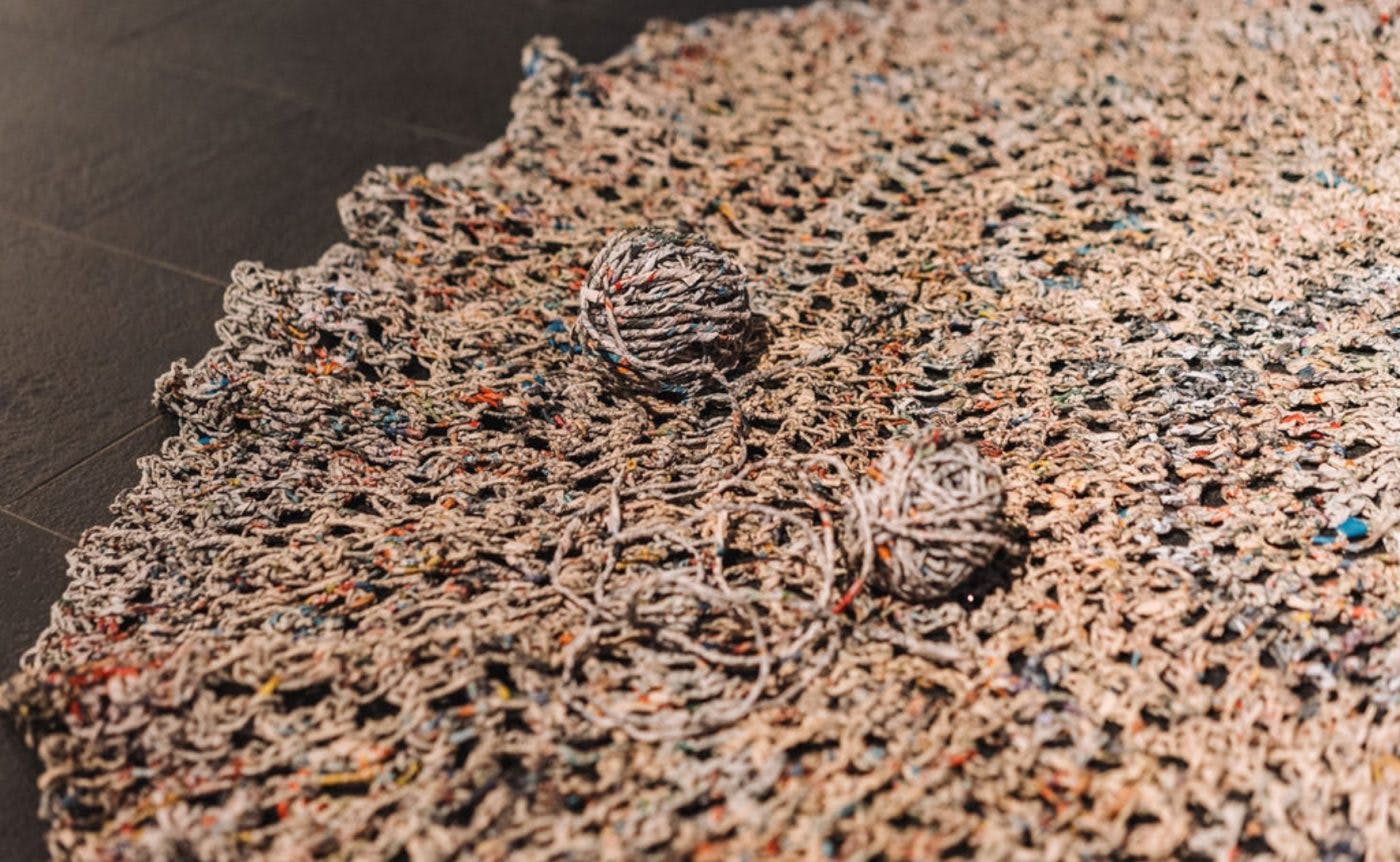
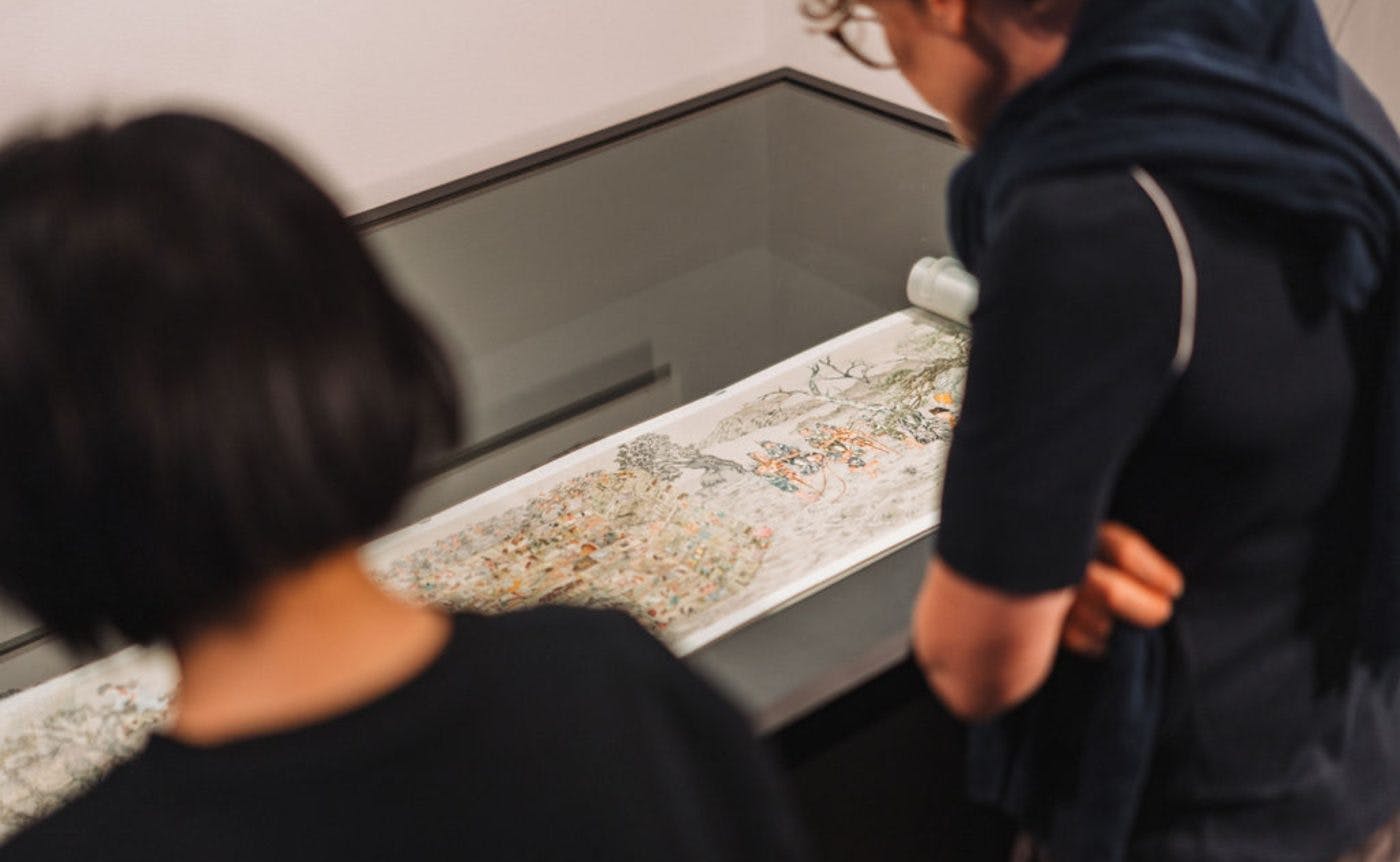
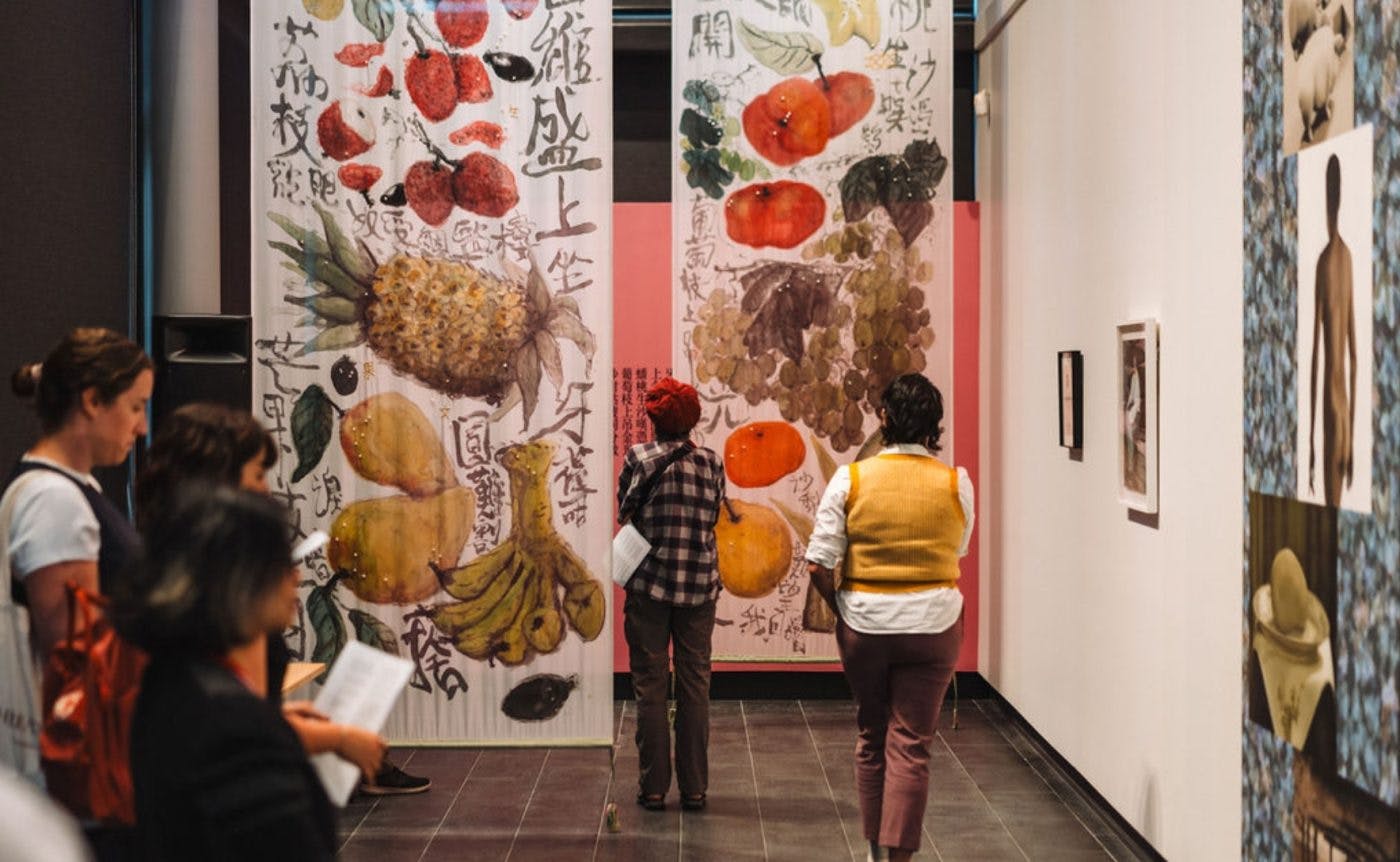
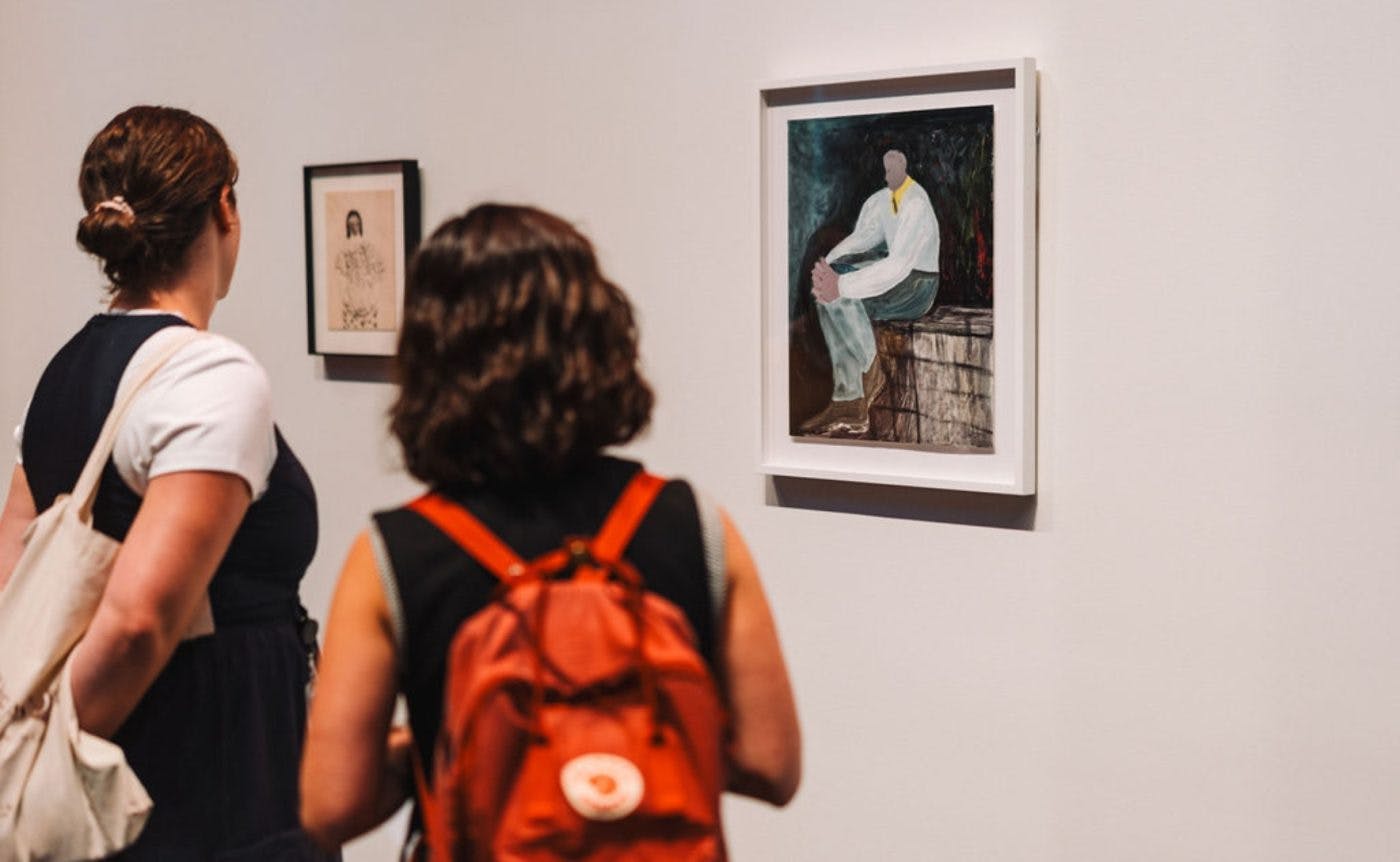
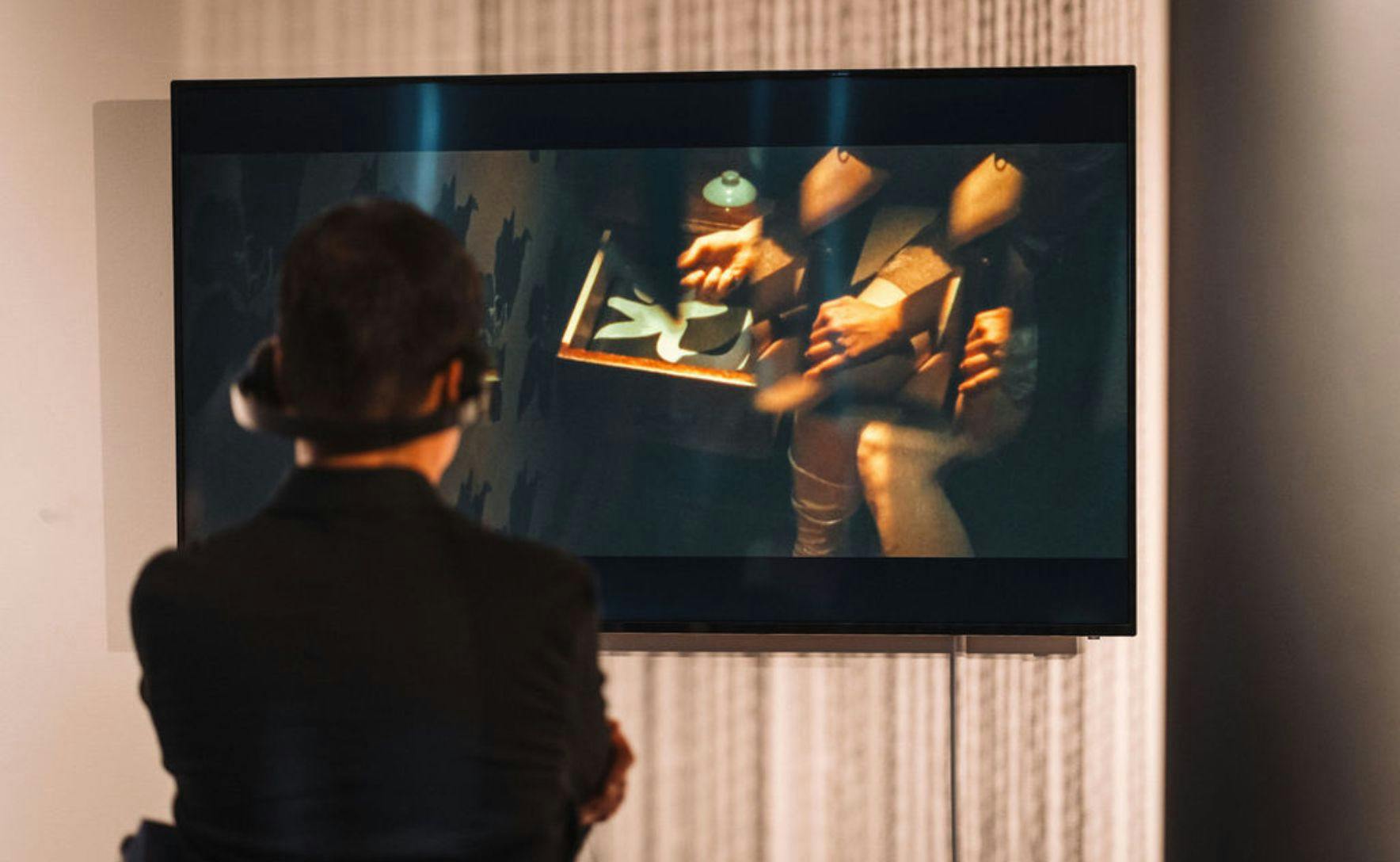
Opening night at Assembly. Photo: Tim Ngo
Previously a Postdoctoral Fellow at the Australian Centre for China in the World, while also managing the gallery, curator Olivier Krischer says the exhibition space at ANU helps tell a story that questions the ready-made assumptions of diaspora, dislocation and belonging.
Gathering together
Each of the artists have different stories of migration across different times and generations. Some connect to milestones in Hong Kong’s shifting history of sovereignty – the 1984 Sino-British Joint Declaration, the 1997 ‘handover’ of sovereignty from Britain to the ‘one country, two systems’ principle with China, and, more recently, the passage of the that retrospectively criminalises any act of secession, undermining the power of the central government, collusion with external forces and terrorism (a broad category including damaging public transport facilities).
Other artists moved as children with their family, as teenage international students, or as adults, for more personal reasons.
The fact that the artists share origins but might otherwise have been unlikely to be placed in the same exhibition is one of the reasons Krischer wanted to bring them together for Assembly.
“Nobody signs up at the border, when they leave, to be part of a community or to consciously represent something,” he says.
John Young, an artist exhibited in Assembly, has represented Australia at international art shows, including at the Guggenheim in New York, and multiple survey exhibitions. He says that the differences in the generations and stories between the artists ask the audience to reflect on these works a little bit more.
“There are very developed languages within contemporary Australian art – different negotiations with Australia and, of course, with Indigenous works,” Young says.
“There’s a complexity in asking for the viewer to understand the visual registers and art processes used in articulating or describing different generational mindsets or different migration stories.
“The show asks us to have a certain empathy towards people speaking almost different art languages – some deeply negotiating with Euro-American modernism, some tangentially.”
Fitting together
One of the sparks that drew Krischer’s attention toward Hong Kong and its diaspora was recently editing a book on John Young and his .
“What I realised in editing a book about these works, was that he’s coming to terms with his own migration experience, what played a role in his identity, and how he relates to the world and his work,” Krischer says.
Assembly features the paintings Hong Kong Burns and That bright red star – which relate to Young’s paintings, which merge foreground and background images to create meaning by context and use.
“I’ve never really done anything that is politically literal,” Young says. “These two paintings were actually done a little bit after the time when Hong Kong went back to mainland China in 1997.”
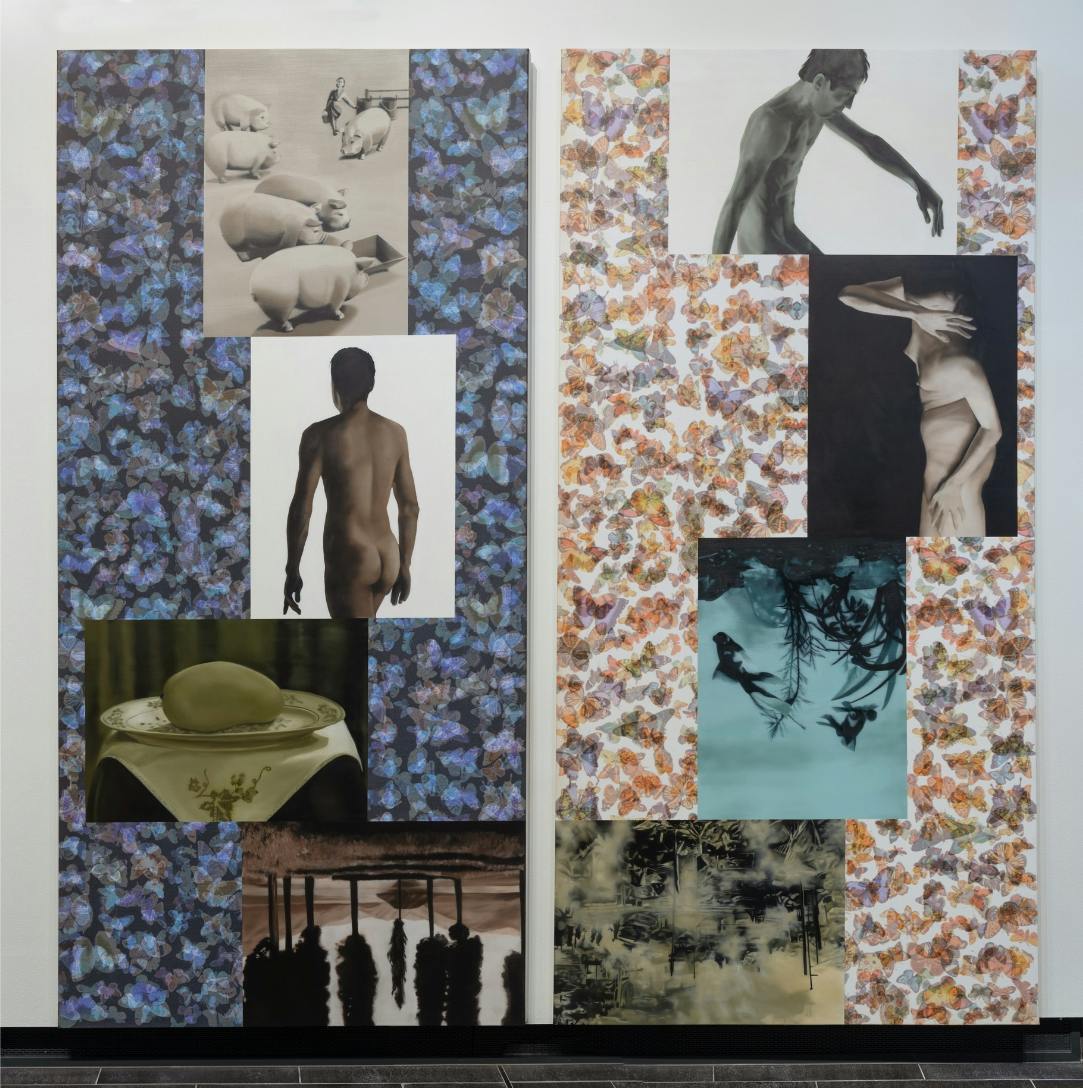
The fluttering butterfly pattern in the background of both pieces suggests a sense of anxiety and uncertainty.
“It was a reflection of the sort of anxieties, not just for people in Hong Kong, but people in the diaspora, of this place and its people, once again, surrendered to another powerful nation state.”
A memory of a place
Young agrees with Mikala Tai, who opened the exhibition, and calls Hong Kong a place of transience, where people often stay for one or two generations and then move to other areas.
“It is a physical place and it’s also a place where there’s a lot of affection placed in memory. When you leave, what you have left is the memory of the place,” Young says.
“To me, that is really the crux of reality of a lot of people in diaspora. They don’t have the presence of place anymore, but they still have the memory and the memory resonates as the most real thing for them. The past is always in their present, so to speak.
“It’s something very unique about this exhibition that is very different from artists coming from larger nation states,” he adds.
For , her work In memory’s eye, we travel deals with themes of memory and reflections on the meaning of home.
“Before my dad passed away and he was in the hospital – in Chinese a home is not just a house it is family as well, it uses the same characters – and so they’re talking about ‘your family will disappear’, and ‘your home will be gone’.
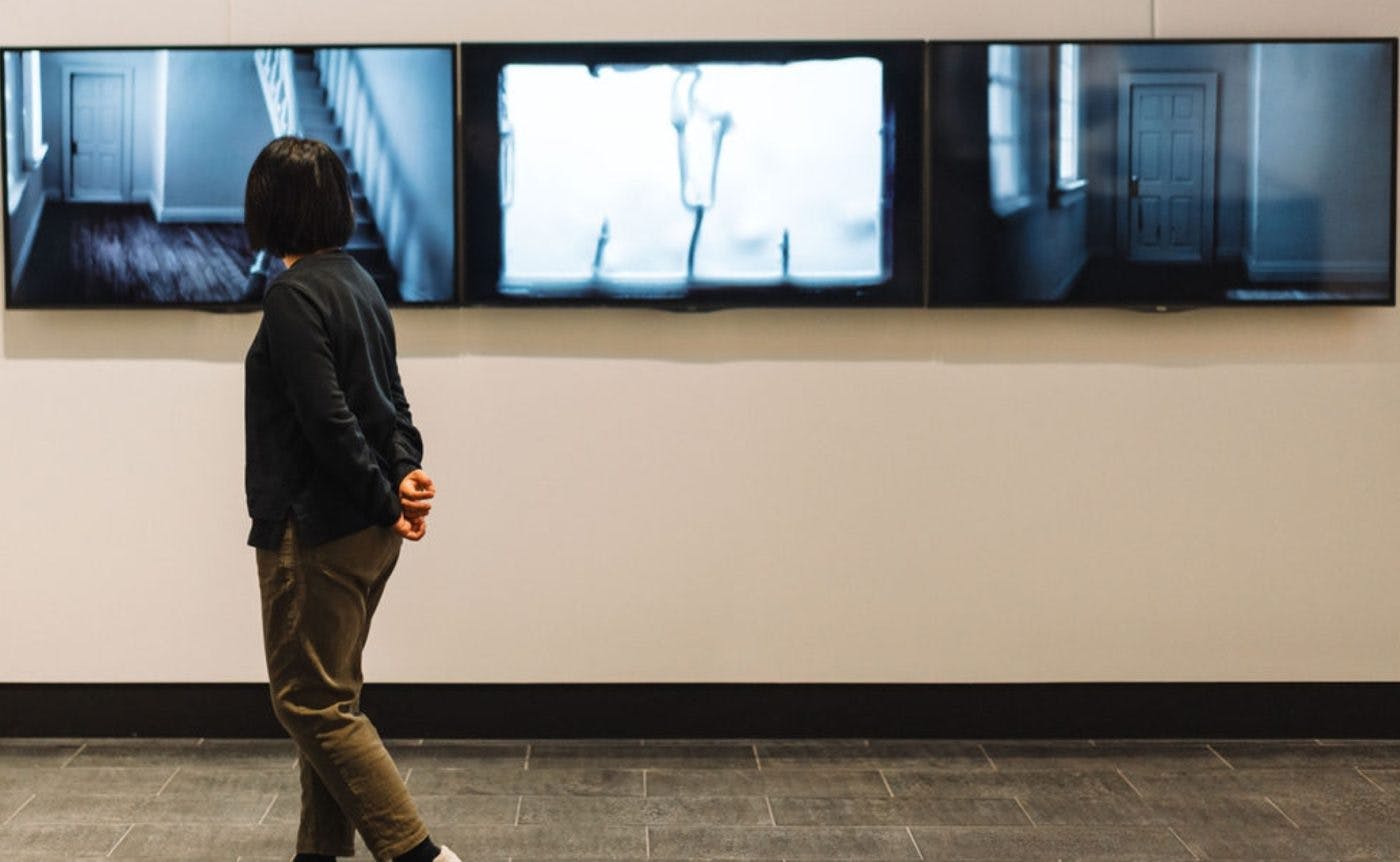
“Every single time you go back, you just find out the whole city changed, especially in Hong Kong.”
Tang says reflecting on loss and nostalgia is part of what brought her to community.
“Every time I talk about loss I can build that connection, because we all experienced that similar feeling at a certain stage and certain age.
“Especially in Australia, there’s so many immigrants and there’s so many people who have experienced something similar to my situation.”
John Young adds that Hong Kong’s diasporic communities are among those uniquely placed to produce work that reflects the complexity of our current society.
“I think that we’re at a point of maturation in Australia in comprehending different diasporas, because we don’t have to just take the political line of understanding China as this monolithic place where artists come from,” Young says.
“There are a lot of different areas – not just Hong Kong, but Macau, Taiwan – that produce exceptionally interesting artists and probably artists that are a lot more well versed in notions of transience and a shifting sense of place, precisely because they are from the diaspora rather than from a monolithic nation state.
“It is important to look at people from different diasporas, whether they’re from Ireland, Iran or Palestine, but there are much wider questions about how to empathise with different people from different diasporas and how these people could contribute to the setting of our growing multicultural reality in Australia.”
is open in the CIW Gallery, Australian Centre on China in the World, Fellows Lane until Friday 24 May.






